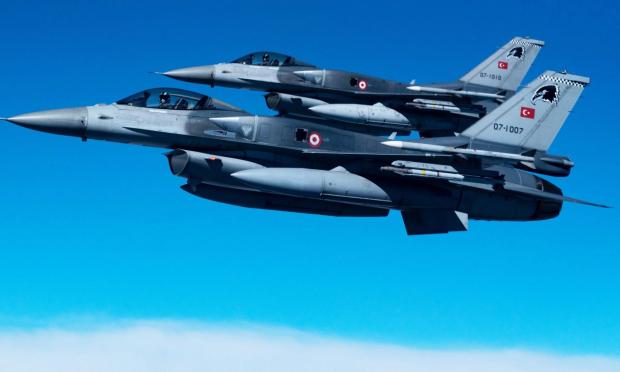The wars in Ukraine and Gaza may have absorbed most of the attention of international public opinion and Greek-Turkish relations may be in a period of declining tension, but this does not prevent the Turkish defence industry from producing new weapon systems and ammunition "photographic" against Greece at a frenetic pace and delivering them to the Turkish Armed Forces (TDF), increasing their operational capabilities.
In recent developments related to the above, it was reported by the Turkish media that Turkey is actively working on creating the first indigenous configuration of the Atmaca anti-ship missile system compatible with F-16 fighter jets.
This integration of the Atmaca system will significantly enhance the F-16's firepower, boosting its anti-ship capabilities.
As the Turkish Navy Command continues to receive deliveries of Atmaca missiles, it is simultaneously working to develop the first air-launched version of this weapon, previously deployed exclusively on surface warships.
This strategic decision aligns with developments in munitions technology, allowing the Atmaca weapon system, a cornerstone of Turkish naval warfare capabilities, to enter air-to-ground operations.
The Atmaca Block-I anti-ship missile will breathe new life into Turkey's ageing F-16 PO-III/PO-IV aircraft by connecting them to advanced firepower. Efforts for this integration will focus on modernizing mission planning technologies, fire control and data connectivity, adapting to the air-to-ground warfare paradigm.
As a result of these initiatives, Turkish F-16 aircraft will be equipped with the capability to engage ground targets using Atmaca missiles in conjunction with IIR-guided SLAM-ER missiles.
Roketsan's development efforts will provide Turkey with its own version of the US AGM-84L-1 missile.
It is worth noting, however, that the air-launched Atmaca will not be equipped with a booster engine.
The integration of the Atmaca anti-ship missile with the F-16 fighter aircraft marks a significant step forward in strengthening Turkey's maritime defense capabilities.
The ATMACA (Accipiter) is an all-weather, long-range, precision-strike, anti-ship cruise missile developed by the Turkish missile manufacturer ROKETSAN.
It has entered service with the Turkish Navy which is attempting to gradually replace the country's existing stock of Harpoon missiles.
The result of this effort was the development of the Atmaca anti-ship missile, equipped with an active radar guidance system with an estimated range of 250 km.
After rigorous testing, the inaugural launch of the Atmaca missile from the Milgem TCG Kinaliada corvette (F-514) took place in November 2019. Atmaca demonstrated its power with a successful hit on a static target located on the sea surface. Subsequent tests were conducted on 18 June 2021, with the corvette Kinaliada launching another Atmaca missile.
The missile uses the Global Positioning System (GPS), inertial navigation system, barometric altitude and radar altitude to navigate to its target, while the active radar seeker locates the target with high accuracy.
The Atmaca missile developed by Roketsan features a minimum radar cross-section and Super Sea Skimming capability.
With a range of over 220 kilometers (140 miles), this guided missile poses a significant threat to targets beyond line of sight due to its high explosive fragmentation warhead.
Its modern data link provides ATMACA with the ability to plan 3D missions, update targets, re-attack and terminate the mission.
The missile has the ability to travel close to the water surface and avoid detection until it reaches a distance of 18-20 km from the target platform.
The Turks are attempting to create with ATMACA in the Aegean, conditions of area denial in parts of the Aegean or even anti-access to a large part of the Archipelago for our Navy.
In closing, we note that a reputable Turkish twitter on defence industry issues states:
"If the ATMACA coastal defense system, developed by Roketsan, is deployed on the coast in the form of 7 separate arrays, the area of influence to be achieved is shown below.
The ATMACA coastal defence system will be able to control 60% of the Black Sea and 85% of the Aegean Sea"
I conclude by pointing out that the integration of the ATMACA anti-ship missile into the Turkish F-16s, due to its long range, coupled with its deployment on warships and land-sea batteries on the Asia Minor coast, will pose a problem for our Navy.
However, the country's existing Patriot anti-aircraft batteries in conjunction with the sea area air defence provided by the three (3) Belhara frigates of our Navy, we believe that it can easily deal with the above threat.



